Support Village Voice News With a Donation of Your Choice.
History informs us that our Amerindian brothers and sisters came to the Guianas by the Bering Strait around 13, 000 years ago. Recognition of this history, as told through the ages and learned in schools, does not ignore the dispute surrounding the same as presented by geologists, anthropologists and archaeologists, and frowned on by a section of the indigenous community who sees it as negative stereotyping. Even as we respect the varying perspectives until agreement is reached, all Guyanese have benefitted from the cultures and history of our First Peoples who continue to play a very pivotal role in every sphere of our lives.
For starters, the name of this country, Guyana, is an Amerindian word meaning “land of many waters.” Sitting atop our Coat of Arms rests the Cacique Crown in all its majesty, symbolising reverence to our Indigenous Peoples. The Umana Yana (Wai Wai meaning “meeting place of the people”) situated in Georgetown was built in August 1972 as the V.I.P and recreation lounge for the Non-Aligned Foreign Ministers Conference hosted by the Forbes Burnham government. Two of our national dishes, pepperpot and cassava bread, were given to us by our First Peoples.
In every sphere of Guyana’s social, political, cultural and economic life our Amerindians brothers and sisters have distinguished themselves. Yet in spite of these stellar contributions the history of our First Peoples have not been without struggle to be treated with respect. For instance, where European history celebrates Christopher Columbus’ discovery of the New World, the counter prevailing view is regret because it ignores the presence of those already on the land, Columbus could not have discovered what was already there, and his arrival brought nothing more than sorrows to those he met here.
Columbus himself acknowledged when he arrived, he met the Amerindians. The unfortunate experiences that resulted from this meeting was the attempts at enslaving the Amerindians and arrival of new diseases, though resisted strenuously was not without brutality and deaths. Thankfully, our First Peoples continue to be vocal and demand what is rightly theirs, including playing an active role in mainstream society, which successive governments have collaborated on. Two major projects advanced by the APNU+AFC (Coalition) Government were community radio stations in Amerindian villages and in 2018 began a pilot programme to have children educated in schools in the native Amerindian languages.
President Irfaan Ali in the addresses in observance of the month said his government will adopt measures to improve access to the delivery of education, health services, housing, and infrastructure within Amerindian communities. He went further to promise that through the injection of resources into the Amerindian Development Fund, the government is also stimulating economic projects in Amerindian villages, thereby generating jobs and providing incomes.
Whatever the government proposes to do or is doing, it should remember the importance of respecting the First Peoples’ right to self-determination and involvement in decision making that impacts their lives. These are rights they have steadfastly held on to through generations and resisted all who tried to impose their will on them. These rights are sacred and must be held in equal esteem as the Golden Arrowhead, national symbols, artifacts and cultures that have shaped the lives of Guyana’s First Peoples which they have shared with other Guyanese and all are appreciative of.
Happy Heritage month















